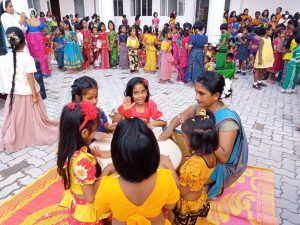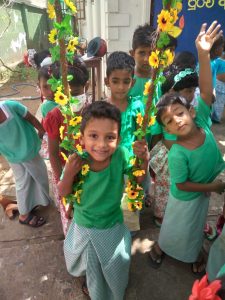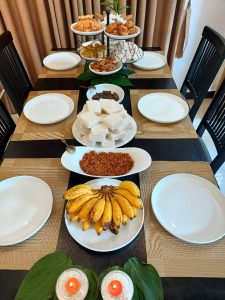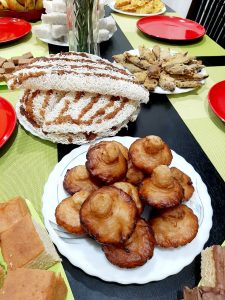
Celebrating Cultural Diversity – The Sinhala and Tamil New Year Celebration in Sri -Lanka
Vol 26 Issue 22
The Sinhala and Tamil New Year is identified to the be festival that portrays the Sri Lankan heritage. The festival exceeds the ethnic boundaries of people in the country and everyone together in the form of ancient customs and rituals. The festival is an annual celebration falls in April. The festival is a celebrated tradition observed by both the Sinhalese and Tamil communities in the country which originates from ancient agricultural practices and astrological beliefs. The festival symbolizes the transition from Pisces to Aries and the start of a new agricultural cycle. The festivities are marked by rituals to invoke blessings for prosperity and fertility. This celebration underscores the unity and cultural richness of Sri Lanka, bringing people together in joyous respect for their shared heritage.


The celebration embarks the customs and rituals passed down through generations. The festive season originates with the preparation of sweetmeats and inherent Sri Lankan delicacies like Kiribath (milk rice), Kokis (crispy rice flour cookies), and Kevum (oil cakes). Such delicacies symbolize the abundance and the spirit of sharing. The families gather to clean and decorate their homes, embracing the New Year with a sense of revival and freshness. The festival is a series of auspicious activities by everyone. Each of these activities are conducted at the auspicious times (Nakath). The lighting of the hearth signifies the start of the New Year. This also emphasizes the importance of hospitality and familial bonds with togetherness. According to the astrological guidance, it dictates the significant activities such as cooking and embarking on journeys.



Traditional games like avurudu kumari, avurudu kumaraya and kotta pora infuse the festivities with joy and competition, bringing people together in a spirit of companionship. These vibrant activities enhance the festivities, nurturing a communal bond and shared happiness. The celebration resembles the Sri Lanka’s rich cultural heritage through various aspects of culinary, familial, and recreational traditions. The Sinhala and Tamil New Year celebration in Sri Lanka bridges ethnic and religious differences, promoting unity amidst diversity. Despite historical tensions, the festival unites people in shared cultural identity. It fosters solidarity through exchanges of greetings and participation in rituals. Additionally, the celebration encourages reconciliation and healing emphasizing harmony and cooperation. One of the main components in the festival is sharing the traditional sweets among relatives, neighbors, and friends. This symbolizes the generosity and goodwill for everyone.
The Sinhala and Tamil New Year celebration represents the spirit of Sri Lankan cultural traditions. More importantly, the festival builds the unifying power of communal harmony. The festivities serve as a lively manifestation of Sri Lankan identity, fostering unity and renewal among its people. As the nation faces modern challenges, the New Year celebration remains an expressive reminder of the enduring values of solidarity, inclusivity, and mutual respect embedded within Sri Lanka’s diverse cultural fabric.
- Finnish Cuisine - 19th April 2024
- “Kokis” – A Snack of Sri Lankan New-year Table - 12th April 2024
- Celebrating Cultural Diversity – The Sinhala and Tamil New Year Celebration in Sri -Lanka - 5th April 2024
